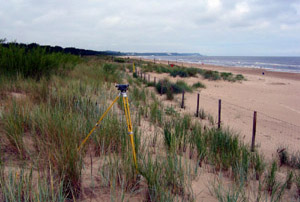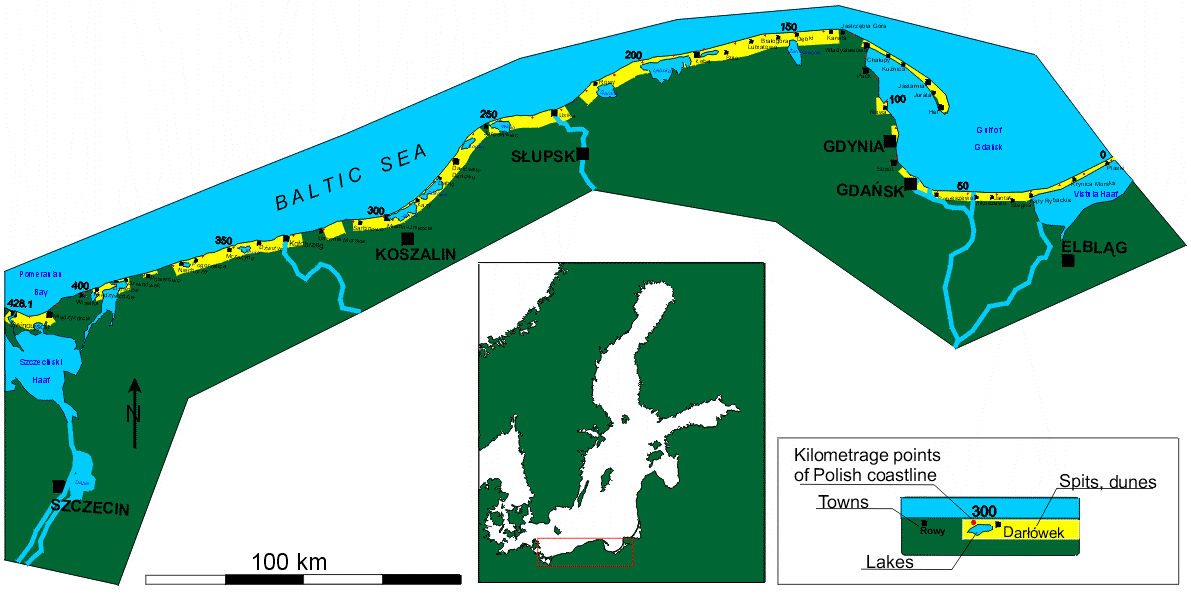P O L I S H D U N E S |

|
|
About the project The coastal dunes show a great deal of variety in form, related to their sedimentology, their climatic setting (past and present), and ecological factors influencing their associated variations (Bird 1990). They are well known from many world coastlines (Bird 1969, Nordstrom, Psuty, Carter 1990, Arens 1994, Nordstrom 2000 and others). They are well developed on sandy barriers where exist or was existed accumulation on the coast. Ridges of coastal dunes are structures build up by sand blowing by the wind along or across beach. Morphodynamic interactions in dunes are not well understood because the chaotic relief of many coastal dunes defies simple description (Carter, et al. 1990). In present times coastal dunes are rapidly changing by human impact and by waves due to increasing sea level. On many coast of the world dunes are completely destroyed. They are not existed in big touristic town and villages. But now they are more endangered by tourism development and human conquest of the natural pieces of the coast. The most important factors in natural dune development are aeolian processes, dune vegetation cover and wind factor. Polish Baltic coast is also threatened by high waves and strong storm surges (Zeidler et al. 1995). Majority of Polish coast is being eroded by sea and retiring on the south (Zawadzka-Kahlau 1999). Accumulation on the coast is observed only in a few places.
This web page was created for people who are interested in dune environment, also for people who want to know more about Polish coasts, especially about dunes. Described Polish spits and coastal dunes: Świna Gate Barrier (or sandbar),
Dziwna River Sandbar,
coastal dunes of morenic highland near Pobierowo,
coastal dunes of sandbars, lowlands and river deltas between Niechorze and Kołobrzeg,
Jamno Lake sandbar,
Bukowo Lake sandbar,
Kopań Lake sandbar,
Wicko Lake sandbar,
Gardno, Łebsko and Sarbsko Lakes sandbar called Łeba Barrier,
sandy areas of lowlands between Stilo and Jastrzębia Góra,
Hel spit,
TriCity sand dunes,
Vistula delta and Vistula Spit.
This web page is prepared as a part of my researches on coastal dunes called ANDDY (Anthropogenic-Natural Dunes Dynamics). This is not a project, but own idea to do researches on dunes to understand changing as a whole environment. This work is also style of my life. I would like to thank people who help me with this work: Sylwia, our students, and many people who help me during my trips - investigations.  This web page originates from results of investigations carried out by author under master of science topic on coastal dunes of Pomeranian Bay since 1996. Also originates from studies carried out in Laboratory of Marine Geomorphology Institute of Marine Sciences since 1998: Driven researches consist of: (i) dune relief changes, (ii) plant vegetation dynamics, (iii) human or animal influence, (iv) storm surges impact, (v) wind factor impact, (vi) sediment diversification and dynamics analyses (surface and structures dynamics). Maps were done using topographical map 1: 10 000 and others, collected aerial postcards come from A.R.W. PAN DRAGON, Gdańsk publishers, old postcards come from album 'Pomorze Zachodnie na dawnych pocztówkach' red. J. Patan, ed. Patan-Press, Kołobrzeg 2000. Rest of photos and used data come from my own researches. Web page copyright Łabuz Tomasz. See also http://bramaswiny.szc.pl.
|
University of Szczecin Tomasz A. Łabuz M.Sc.
Copyright |


